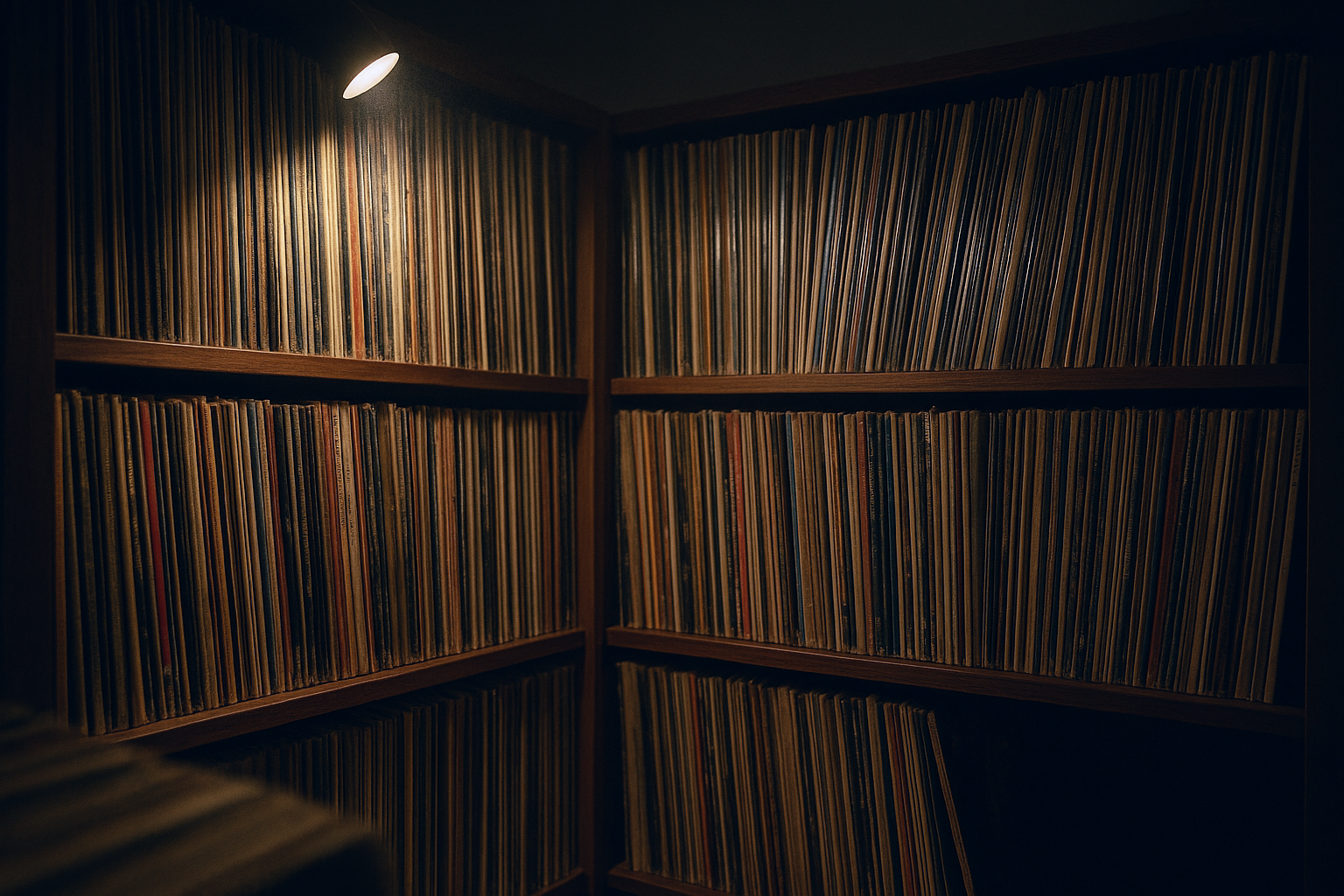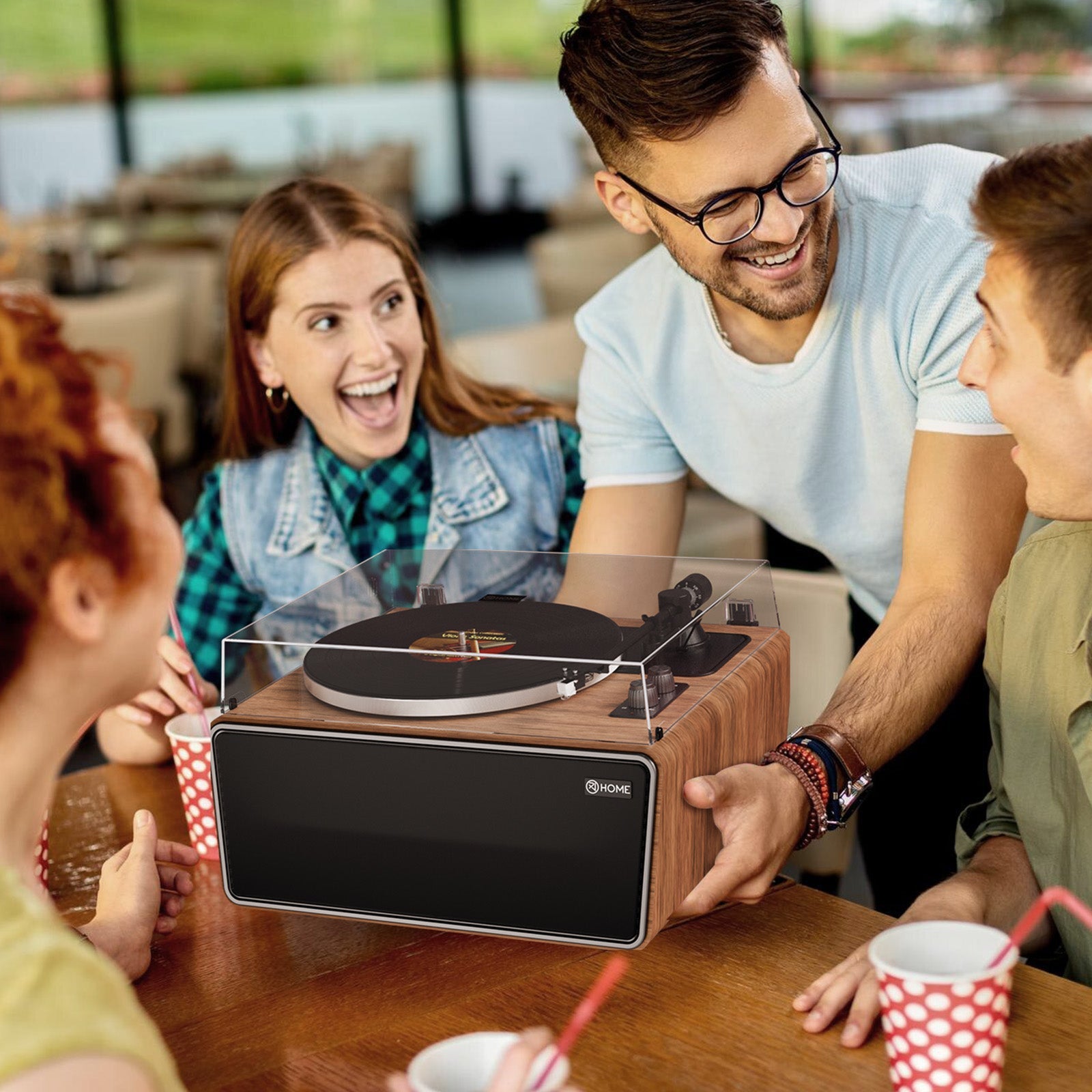In the intricate chain of analog audio reproduction, the phono preamplifier plays a pivotal, if sometimes unsung, role. It doesn't just boost the minuscule signal from your cartridge; it also applies the crucial RIAA equalization curve. But beyond these fundamental duties lies a critical setup step that many enthusiasts overlook or misunderstand: calibrating its output level. Get this wrong, and you could be unknowingly strangling your sound quality with distortion or burying it under a blanket of noise.
Many audiophiles meticulously set their Vertical Tracking Force and agonize over cartridge alignment, yet when it comes to the phono stage, they simply plug it in and hope for the best. This "set and forget" approach can be a significant sonic bottleneck. At XJ-HOME, we believe that understanding and optimizing every link in the audio chain is key to unlocking a truly immersive and authentic listening experience. Today, we're diving deep into the art and science of taming your phono preamp's output.
Why Bother? The Perils of Uncalibrated Phono Output
Your phono preamp's job is to take the very low-level output from your phono cartridge (millivolts, or even microvolts for low-output MCs) and amplify it to a standard "line level" signal that your main amplifier, receiver, or ADC (Analog-to-Digital Converter for recording) expects.
-
If the Output is Too Low:
-
You'll have to crank the volume on your main amplifier much higher to achieve normal listening levels.
-
This amplifies not just the music, but also the inherent noise floor of both the phono stage and the main amplifier, resulting in audible hiss and a compromised signal-to-noise ratio. The music will sound weak and lack dynamic punch.
-
-
If the Output is Too High (The More Common & Destructive Issue):
-
The signal can clip the input stage of the device it's connected to (your amplifier or ADC). Clipping is a nasty form of distortion where the peaks of the audio waveform are squared off. It sounds harsh, compressed, and utterly unmusical.
-
Even if it doesn't audibly clip, an excessively hot signal can reduce headroom, making the system less forgiving of dynamic peaks in the music and potentially leading to a "hard" or "aggressive" sound.
-
The goal is to find the "sweet spot": an output level that is robust enough to provide a good signal-to-noise ratio but provides ample headroom to prevent clipping the next stage in your audio chain.
Essential Tools for the Task
-
Test Record: This is non-negotiable for accurate calibration. You need one with:
-
A reference-level 1kHz sine wave tone (e.g., recorded at 0dB or a specific velocity like 5 cm/s or 7 cm/s). This provides a steady, predictable signal.
-
Ideally, tracks with different frequencies and dynamic content can also be useful for further checks.
-
Examples: Hi-Fi News Analogue Test LP, Ortofon Test Record, Analogue Productions Ultimate Analogue Test LP.
-
-
Digital Multimeter (DMM) with AC Voltage Measurement: For measuring the actual AC voltage output of your phono preamp. This is the most precise method for matching to analog line-level inputs.
-
Recording Software with Calibrated Level Meters (if digitizing or using a computer in the chain): Software like Audacity, Adobe Audition, or any DAW will show you input levels in dBFS (decibels Full Scale).
-
Your Ears (but with caution): While not a precision tool for this task, they can help identify gross problems like obvious distortion or excessive hiss.
Calibration Methods: Finding the Sweet Spot
Method 1: Using a Test Record & Multimeter (Ideal for Analog Line-Level Connections)
This method aims to match your phono preamp's output voltage to the expected input voltage of your amplifier or receiver.
-
Know Your Targets:
-
Consumer Line Level: Typically around -10dBV, which is approximately 0.316 Volts RMS. Many integrated amps and receivers are designed for this.
-
Pro Audio Line Level: Typically around +4dBu, which is approximately 1.228 Volts RMS. Some high-end preamps and power amps might expect this, or have inputs that can handle it.
-
Consult your amplifier/receiver's manual for its input sensitivity specifications. This tells you how much voltage is needed at its input to drive it to its full rated power. You generally want your phono stage's typical peak output to be comfortably below the point that would overload this input.
-
-
Setup:
-
Connect your turntable to your phono preamp. Ensure the phono preamp is powered on.
-
Connect the outputs of your phono preamp to your DMM. Set the DMM to measure AC Voltage (V~).
-
Do not connect the phono preamp to your main amplifier during this measurement, or ensure the main amplifier is turned off or its volume is fully down to prevent loud tones.
-
-
Play the Test Tone:
-
Place your test record on the turntable.
-
Play the 1kHz reference level track (e.g., 0dB or 5 cm/s).
-
-
Measure and Adjust:
-
Observe the AC voltage reading on your DMM.
-
If your phono preamp has adjustable gain: Start with the lowest gain setting. Gradually increase the gain until the DMM reads your target voltage (e.g., aiming for peaks around 0.3V to 0.5V RMS for consumer line level, or higher if your next stage is designed for it, when playing a 0dB reference track).
-
The Iconoclast's Note: Cartridge output levels vary wildly (e.g., a 5mV MM cart vs. a 0.3mV LOMC cart). A 0dB reference track on a test LP is typically cut at a high modulation level. If your cartridge outputs 5mV and your phono stage has 40dB of gain (a 100x voltage increase), your output would be 500mV or 0.5V from that reference track. This is often a good target for many systems.
-
-
If your phono preamp has fixed gain (common): This measurement tells you what its output level is. You then compare this to what your amplifier expects. If it's significantly too high or too low, you might need a phono preamp with different gain, or consider in-line attenuators (if too high) or a line-level booster (if too low, though this is less ideal).
-
Method 2: Using a Test Record & Recording Software (Ideal for Digitizing/Computer Audio Interface)
This method focuses on achieving optimal digital recording levels.
-
Setup:
-
Connect your turntable to your phono preamp.
-
Connect the phono preamp's output to the line inputs of your audio interface/sound card.
-
Open your recording software and select the correct audio input. Ensure input monitoring is enabled so you can see the level meters.
-
-
Play the Test Tone:
-
Use the same 1kHz reference level track on your test record.
-
-
Observe Levels & Adjust:
-
Watch the input level meters in your software (usually calibrated in dBFS, where 0dBFS is maximum digital level/clipping).
-
If your phono preamp has adjustable gain: Adjust it so the 1kHz reference tone reads between -18dBFS and -12dBFS. This range is a common professional audio alignment level and provides plenty of headroom.
-
If your audio interface has input gain/trim controls: Use these to achieve the target -18dBFS to -12dBFS level from the test tone, leaving the phono preamp at its optimal (or fixed) gain setting.
-
The Goal: You want the loudest peaks in your actual music to fall somewhere around -6dBFS, ensuring no digital clipping. The steady test tone at -18dBFS to -12dBFS gives you a calibrated reference.
-
Method 3: The Subjective "By Ear" Check (Use as a final sanity check or if no tools are available)
-
After using one of the above methods (or if you have no choice), play a dynamic, well-recorded piece of music you know well.
-
Listen for:
-
Distortion on peaks: If loud passages sound harsh, compressed, or "crackly," your level might be too high, causing clipping in the phono stage or the next device.
-
Excessive Hiss/Noise: If you have to turn your main volume way up and the music is accompanied by a lot of background hiss, your phono stage output might be too low.
-
This method is highly unreliable for precise calibration but can help identify gross mismatches.
-
Understanding Phono Preamp Gain & Cartridge Output
-
Cartridge Output Voltage: Stated in millivolts (mV).
-
Typical Moving Magnet (MM): 2.5mV - 7.5mV
-
High-Output Moving Coil (HOMC): 1.5mV - 3.0mV
-
Low-Output Moving Coil (LOMC): 0.1mV - 0.5mV
-
-
Phono Preamp Gain: Measured in decibels (dB). 40dB is a voltage gain of 100x, 50dB is ~316x, 60dB is 1000x.
-
Typical MM gain: 35dB - 45dB
-
Typical LOMC gain: 55dB - 70dB
-
-
Matching: You need enough gain to bring your specific cartridge's output up to a healthy line level without overdoing it. For a deeper dive into decibels in audio, websites like Sound On Sound often have excellent explanatory articles.
The "Next Stage" Consideration: Amplifier Input Sensitivity
Always check your main amplifier or receiver's manual for its line input sensitivity (e.g., "Input Sensitivity: 200mV for rated output"). If your phono stage, when playing a loud passage, outputs significantly more than this (e.g., 1V or 2V), you risk overloading the amplifier's input stage, even if the phono stage itself isn't clipping. This is why aiming for a sensible line-level output (like 0.3V - 0.5V RMS for typical peaks with consumer gear) from your phono stage is often a good target.
The Sweet Sound of Synergy
Calibrating your phono preamp's output level isn't just a technical exercise; it's about ensuring seamless synergy between your components. It's about presenting your amplifier or ADC with a signal that's strong, clean, and free from distortion, allowing the music to flow with its full dynamic range and emotional impact. This attention to detail, this pursuit of optimal performance from every part of the chain, is what elevates a good audio system to a great one – a philosophy we passionately endorse at XJ-HOME.
Take the time to get this right. Your ears (and your equipment) will thank you for it.
What are your experiences or preferred methods for setting phono preamp levels? Share your insights in the comments!





Leave a comment
All comments are moderated before being published.
This site is protected by hCaptcha and the hCaptcha Privacy Policy and Terms of Service apply.